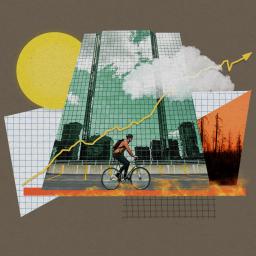 |
by Casey Crownhart on (#6HA7Q)
This article is from The Spark, MIT Technology Review's weekly climate newsletter. To receive it in your inbox every Wednesday, sign up here. This has been quite the year for climate news, with weather disasters, technological breakthroughs, and policy changes making headlines around the world. There's an abundance of bad news, but there are also...
|
MIT Technology Review
| Link | https://www.technologyreview.com/ |
| Feed | https://www.technologyreview.com/stories.rss |
| Updated | 2025-12-18 03:17 |
by Tiffany Ng on (#6HA5X)
Websites weren't always slick digital experiences. There was a time when surfing the web involved opening tabs that played music against your will and sifting through walls of Times New Roman text on a colored background. In the 2000s, before Squarespace and social media, websites were manifestations of individuality-built entirely from scratch using HTML, by...
 |
by Rhiannon Williams on (#6H9FY)
This is today's edition ofThe Download,our weekday newsletter that provides a daily dose of what's going on in the world of technology. There was some good climate news in 2023. Really. Scientists are loudly warning that the world is running out of time to avoid dangerous warming levels. The picture is grim. But if you...
|
 |
by Zeyi Yang on (#6H9D9)
This story first appeared in China Report, MIT Technology Review's newsletter about technology in China.Sign upto receive it in your inbox every Tuesday. The new year will be here soon! Typically, it's a great time for a fresh start. But not always. And today I want to talk about something that's unfortunately moving in the...
|
 |
by Matthew S. Smith on (#6H9AZ)
Google Glass, a prototype augmented-reality headset released in April 2013, had the makings of a hit. It promised intuitive, hands-free access to a smartphone's most important features-video recording, navigation, and even email. Forget touch screens and buttons: the future of computing was on your face. It was a disaster. Though beautiful in concept, Glass was...
|
 |
by Casey Crownhart, James Temple, June Kim on (#6H9AY)
Bad climate news was everywhere in 2023. It's been the hottest year on record, with January through November clocking in at 1.46 C (2.62 F) warmer on average than preindustrial temperatures. Meanwhile, emissions from fossil fuels hit a new high-36.8 billion metric tons of carbon dioxide, 1.1% more than in 2022. Scientists are loudly warning...
|
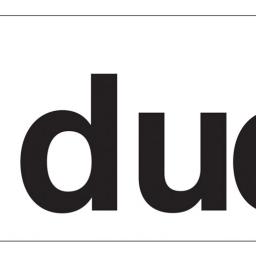 |
by Barry Duncan on (#6H8R5)
I composed the following palindromes in honor of the 125th anniversary of MIT Technology Review. They include what I call a punctuate-it-yourself" (or p-i-y) palindrome on James Mason Crafts. (Volume I, Issue 1 of the Review contained a lengthy profile of Crafts, who served as MIT's fourth president and held the office from 1897 to...
|
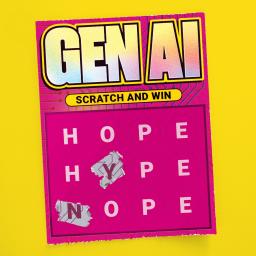 |
by Rhiannon Williams on (#6H8J2)
This is today's edition ofThe Download,our weekday newsletter that provides a daily dose of what's going on in the world of technology. These six questions will dictate the future of generative AI The internet changed everything-how we work and play, how we spend time with friends and family, how we learn, how we consume, how...
|
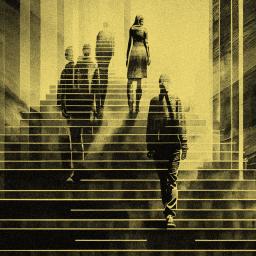 |
by Melissa Heikkilä on (#6H8DT)
This story originally appeared in The Algorithm, our weekly newsletter on AI. To get stories like this in your inbox first, sign up here. This has been one of the craziest years in AI in a long time: endless product launches, boardroom coups, intense policy debates about AI doom, and a race to find the...
|
 |
by Will Douglas Heaven on (#6H8DV)
It was a stranger who first brought home for me how big this year's vibe shift was going to be. As we waited for a stuck elevator together in March, she told me she had just used ChatGPT to help her write a report for her marketing job. She hated writing reports because she didn't...
|
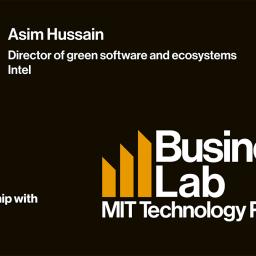 |
by MIT Technology Review Insights on (#6H7QY)
After years of committing to sustainable practices in his personal life from recycling to using cloth-based diapers, Asim Hussain, currently the director of green software and ecosystems at Intel, began to ask questions about the practices in his work: software development. Developers often asked if their software was secure enough, fast enough, or cost-effective enough...
|
 |
by MIT Technology Review Insights on (#6H817)
One can't step into the same river twice. This simple representation of change as the only constant was taught by the Greek philosopher Heraclitus more than 2000 years ago. Today, it rings truer than ever with the advent of generative AI. The emergence of generative AI is having a profound effect on today's enterprises-business leaders...
|
 |
by Rhiannon Williams on (#6H7MX)
This is today's edition ofThe Download,our weekday newsletter that provides a daily dose of what's going on in the world of technology. The hunter-gatherer groups at the heart of a microbiome gold rush Over the last couple of decades, scientists have come to realize just how important the microbes that crawl all over us are...
|
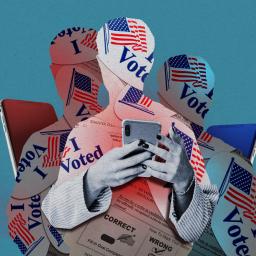 |
by Tate Ryan-Mosley on (#6H7J5)
This article is from The Technocrat, MIT Technology Review's weekly tech policy newsletter about power, politics, and Silicon Valley. To receive it in your inbox every Friday, sign up here. We're already at that time of year when we start looking ahead to what's coming in 2024. For Technocrat readers (and the rest of the...
|
 |
by Jessica Hamzelou on (#6H7FZ)
We're all teeming with microbes. We've got guts full of them, and they're crawling all over our skin. These tiny, ancient life forms have evolved with us. And over the last couple of decades, scientists have come to realize just how important they are to our health and well-being. They help extract nutrients from our...
|
 |
by Eric Schmidt on (#6H5XG)
The coming year will be one of seismic political shifts. Over 4 billion people will head to the polls in countries including the United States, Taiwan, India, and Indonesia, making 2024 the biggest election year in history. And election campaigns are using artificial intelligence in novel ways. Earlier this year in the US, the Republican...
|
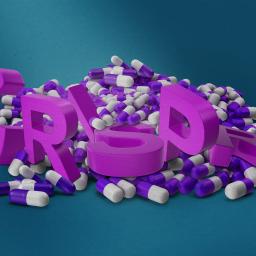 |
by Rhiannon Williams on (#6H5TJ)
This is today's edition ofThe Download,our weekday newsletter that provides a daily dose of what's going on in the world of technology. Vertex developed a CRISPR cure. It's already on the hunt for something better. The company that just got approval to sell the first gene-editing treatment in history, for sickle-cell disease, is already looking...
|
 |
by Antonio Regalado on (#6H5RF)
The company that just got approval to sell the first gene-editing treatment in history, for sickle-cell disease, is already looking for an ordinary drug that could take its place. Vertex Pharmaceuticals has a 50-person team working to make a pill that doesn't do gene editing at all," says David Altshuler, head of research at the...
|
 |
by Cassandra Willyard on (#6H5P9)
This article first appeared in The Checkup, MIT Technology Review's weekly biotech newsletter. To receive it in your inbox every Thursday, and read articles like this first,sign up here. Covid shots do an admirable job of boosting our immune response enough to protect against serious illness, but they don't boost immunity in the one spot...
|
 |
by Will Douglas Heaven on (#6H54G)
OpenAI has announced the first results from its superalignment team, the firm's in-house initiative dedicated to preventing a superintelligence-a hypothetical future computer that can outsmart humans-from going rogue. Unlike many of the company's announcements, this heralds no big breakthrough. In a low-key research paper, the team describes a technique that lets a less powerful large...
|
 |
by Will Douglas Heaven on (#6H510)
Google DeepMind has used a large language model to crack a famous unsolved problem in pure mathematics. In a paper published in Nature today, the researchers say it is the first time a large language model has been used to discover a solution to a long-standing scientific puzzle-producing verifiable and valuable new information that did...
|
 |
by Charlotte Jee on (#6H4WX)
This is today's edition ofThe Download,our weekday newsletter that provides a daily dose of what's going on in the world of technology. The two words that pushed international climate talks into overtime The annual UN climate negotiations at COP28 in Dubai have officially come to a close. Delegates scrambled to get a deal together in...
|
 |
by Rhiannon Williams on (#6H4QM)
A new system that teaches robots a domestic task in around 20 minutes could help the field of robotics overcome one of its biggest challenges: a lack of training data. The open-source system, called Dobb-E, was trained using data collected from real homes. It can help to teach a robot how to open an air...
|
 |
by Casey Crownhart on (#6H4P3)
This article is from The Spark, MIT Technology Review's weekly climate newsletter. To receive it in your inbox every Wednesday, sign up here. The annual UN climate negotiations at COP28 in Dubai have officially come to a close. Delegates scrambled to get a deal together in the early morning hours, and the meetings ended a...
|
 |
by Antonio Regalado on (#6H451)
Vertex Pharmaceuticals has agreed to buy rights to use a dominant CRISPR patent owned by the Broad Institute of Harvard and MIT, avoiding a potential lawsuit over its new gene-editing treatment for sickle-cell disease. The agreement allows Vertex to start selling its treatment, approved last Friday, without fear of patent infringement claims. The one-time treatment...
|
 |
by Rhiannon Williams on (#6H3YG)
This is today's edition ofThe Download,our weekday newsletter that provides a daily dose of what's going on in the world of technology. Two former Department of Energy staffers warn we're doing carbon removal all wrong The carbon removal industry is just starting to take off, but some experts are warning that it's already headed in...
|
 |
by Zeyi Yang on (#6H3WB)
This story first appeared in China Report, MIT Technology Review's newsletter about technology in China.Sign upto receive it in your inbox every Tuesday. It's a perennial debate: whether American tech companies are contributing to government control of the internet in China. But long before Apple ceded control of local user data to the state or...
|
 |
by James Temple on (#6H3KE)
The carbon removal industry is just starting to take off, but some experts are warning that it's already headed in the wrong direction. Two former staffers of the US agency responsible for advancing the technology argue that the profit-driven industry's focus on cleaning up corporate emissions will come at the expense of helping to pull...
|
by Eric Y. Durand, PhD on (#6H37A)
37 trillion. That is the number or cells that form a human being. How they all work together to sustain life is possibly the biggest unsolved puzzle in biology. A group of up-and-coming technologies for spatially resolved multi omics, here collectively called spatial omics," may provide researchers with the solution. Over the last 20 years,...
 |
by Rhiannon Williams on (#6H31C)
This is today's edition ofThe Download,our weekday newsletter that provides a daily dose of what's going on in the world of technology. Inside the decades-long fight over Yahoo's misdeeds in China When you think of Big Tech these days, Yahoo is probably not top of mind. But for Chinese dissident Xu Wanping, the company still...
|
 |
by Eileen Guo on (#6H2X4)
When you think of Big Tech these days, Yahoo is probably not top of mind. But for a 62-year-old Chinese dissident named Xu Wanping, the company still looms large-and has for nearly two decades. In 2005, Xu was arrested for signing online petitions relating to anti-Japanese protests. He didn't use his real name, but he...
|
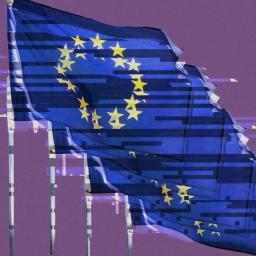 |
by Melissa Heikkilä on (#6H2CT)
This story is from The Algorithm, our weekly newsletter on AI. To get stories like this in your inbox first,sign up here. It's done. It's over. Two and a half years after it was first introduced-after months of lobbying and political arm-wrestling, plus grueling final negotiations that took nearly 40 hours-EU lawmakers have reached a...
|
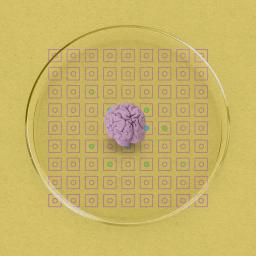 |
by Abdullahi Tsanni on (#6H29J)
Brain organoids, clumps of human brain cells grown in a dish, can be hooked up to an electronic chip and carry out simple computational tasks, a new study shows. Feng Guo and his team at Indiana University Bloomington generated a brain organoid from stem cells, attached it to a computer chip, and connected their setup,...
|
 |
by Rhiannon Williams on (#6H23T)
This is today's edition ofThe Download,our weekday newsletter that provides a daily dose of what's going on in the world of technology. Why the EU AI Act was so hard to agree on On Saturday, European Union lawmakers announced they'd finally agreed the terms of the final version of the EU AI Act, a major...
|
 |
by Tate Ryan-Mosley on (#6H21T)
This article is from The Technocrat, MIT Technology Review's weekly tech policy newsletter about power, politics, and Silicon Valley. To receive it in your inbox every Friday, sign up here. Update: On December 8, 2023, the EU AI Act was agreed on, after this story was written and sent as MIT Technology Review's weekly tech...
|
 |
by Golda Arthur on (#6H21S)
The results of my genetic test arrived in an unpretentious white envelope. It was the summer of 2021, and I almost missed it when I flipped through the mail, but I set it aside from the rest of the bills to look at later. About a month before, I had sent a sample of my...
|
 |
by Amy Nordrum on (#6H084)
No one can predict the future, but here at MIT Technology Review we spend much of our time thinking about what it might hold. One thing we know is that it's especially hard to make predictions about technology. Most emerging technologies fizzle or flame out. Some start out as consumer devices but wind up finding...
|
 |
by Rhiannon Williams on (#6H05W)
This is today's edition ofThe Download,our weekday newsletter that provides a daily dose of what's going on in the world of technology. The lucky break behind the first CRISPR treatment The world's first commercial gene-editing treatment is set to start changing the lives of people with sickle-cell disease. It's called Casgevy, and it was approved...
|
by Amy Nordrum on (#6H05X)
Our new 2024 list of 10 Breakthrough Technologies won't come out until January. But I recently gave attendees at EmTech MIT a sneak peek at one item that made the list-weight-loss drugs.Caroline Apovian, co-director of the Center for Weight Management and Wellness at Brigham and Women's Hospital in Boston, Massachusetts, then joined me on stage...
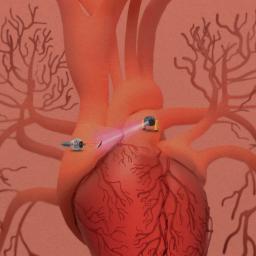 |
by Cassandra Willyard on (#6H039)
This article first appeared in The Checkup, MIT Technology Review's weekly biotech newsletter. To receive it in your inbox every Thursday, and read articles like this first,sign up here. The human body is a labyrinth of vessels and tubing, full of barriers that are difficult to break through. That poses a serious hurdle for doctors....
|
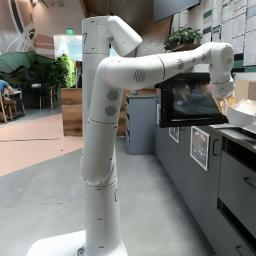 |
by June Kim on (#6H03A)
There are two bowls on the kitchen table: one made of plastic, the other metal. You ask the robot to pick up the bowl and put it in the microwave. Which one will it choose? A human might ask for clarification, but given the vague command, the robot may place the metal bowl in the...
|
 |
by Antonio Regalado on (#6GZ8V)
The world's first commercial gene-editing treatment is set to start changing the lives of people with sickle-cell disease.It's called Casgevy, and it was approved last month in the UK. US approval is pending this week. The treatment, which will be sold in the US by Vertex Pharmaceuticals, employs CRISPR, the Nobel-winning molecular scissors that have...
|
 |
by Rhiannon Williams on (#6GZ8W)
This is today's edition ofThe Download,our weekday newsletter that provides a daily dose of what's going on in the world of technology. Google DeepMind's new Gemini model looks amazing-but could signal peak AI hype Hype about Gemini, Google DeepMind's long-rumored response to OpenAI's GPT-4, has been building for months. Now, the company has finally revealed...
|
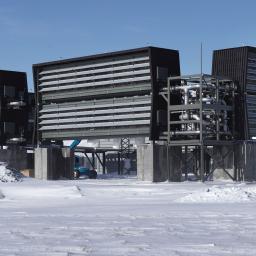 |
by Casey Crownhart on (#6GZ48)
This article is from The Spark, MIT Technology Review's weekly climate newsletter. To receive it in your inbox every Wednesday, sign up here. If you could go back in time, what would you change about your life, or the world? The idea of giving myself some much-needed advice is appealing (don't cut your own bangs...
|
 |
by Mat Honan on (#6GYGY)
Google released the first phase of its next-generation AI model, Gemini, today. Gemini reflects years of efforts from inside Google, overseen and driven by its CEO, Sundar Pichai. (You can read all about Gemini in our report from Melissa Heikkila and Will Douglas Heaven here.) Pichai, who previously oversaw Chrome and Android, is famously product...
|
 |
by Melissa Heikkilä, Will Douglas Heaven on (#6GYDG)
Hype about Gemini, Google DeepMind's long-rumored response to OpenAI's GPT-4, has been building for months. Today the company finally revealed what it has been working on in secret all this time. Was the hype justified? Yes-and no. Gemini is Google's biggest AI launch yet-its push to take on competitors OpenAI and Microsoft in the race...
|
 |
by Rhiannon Williams on (#6GYA4)
This is today's edition ofThe Download,our weekday newsletter that provides a daily dose of what's going on in the world of technology. Millions of coders are now using AI assistants. How will that change software? Two weeks into the coding class he was teaching at Duke University in North Carolina this spring, Noah Gift told...
|
 |
by Will Douglas Heaven on (#6GY7K)
Two weeks into the coding class he was teaching at Duke University in North Carolina this spring, Noah Gift told his students to throw out the course materials he'd given them. Instead of working with Python, one of the most popular entry-level programming languages, the students would now be using Rust, a language that was...
|
 |
by Zeyi Yang on (#6GY7M)
This story first appeared in China Report, MIT Technology Review's newsletter about technology in China.Sign upto receive it in your inbox every Tuesday. Have you ordered food delivery lately? If you have, you probably know that particular feeling of frustration when you have to wait too long for your order or, when you finally receive...
|
 |
by Rhiannon Williams on (#6GXAZ)
This is today's edition ofThe Download,our weekday newsletter that provides a daily dose of what's going on in the world of technology. Make no mistake-AI is owned by Big Tech -By Amba Kak, Sarah Myers West and Meredith Whittaker, members of the AI Now Institute Until late November, when the epic saga of OpenAI's board...
|